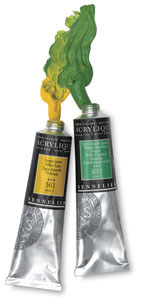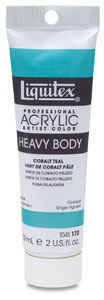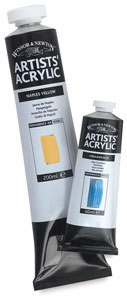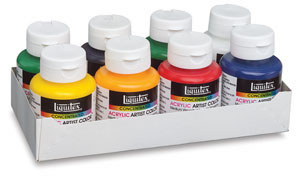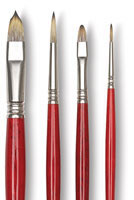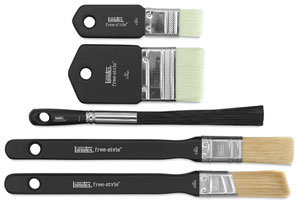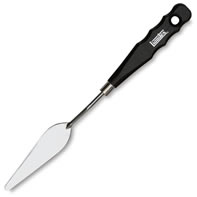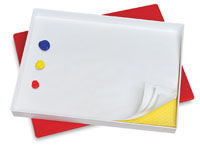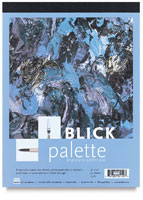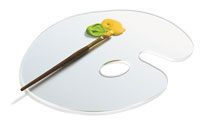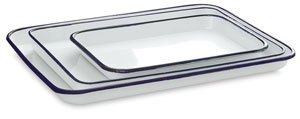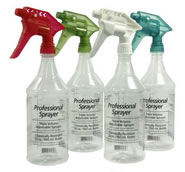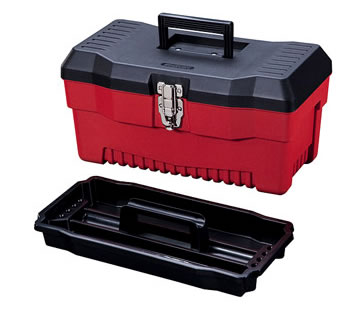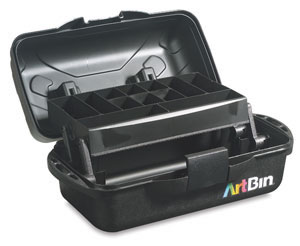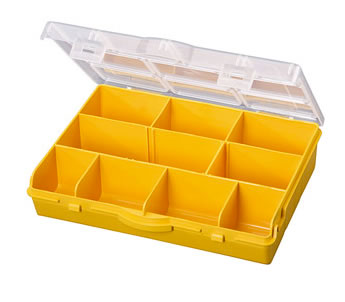The following Liquitex Heavy Body Professional Acrylic Artists Colors (preferred) will be needed for class work. You may also choose the 2 oz./59ml jar colors (Liquitex Soft Body Acrylics) if you want to use a thinner, more fluid paint (price is sometimes less, and color is somewhat less rich). You may want to add some of the other colors listed as you have the need—the required set offers a good spectrum for color mixing and exploration.
You are free to buy paint from other manufacturers than Liquitex. However, check the notes, above, on paint brands before making your purchase.
Red Purple |
Red Cadmium Red Medium Hue (6.25R; 14C; M) or Naphthol Red Light (7.36R; 14C; S ) or Pyrrole Red (6.2R; 14C; S; Opq ) or Quinacridone Red (5.43R; 11C; S ) |
Red Orange optional intense RO: |
|||
| Orange Cadmium Orange Hue (3.9YR)(M3) or Pyrrole Orange (S:PO73; $) or Yellow Orange Azo (8.5YR; 13C; T ) *AND* Burnt Umber |
Yellow Orange Raw Sienna (5YR; 5.44C; S ) *AND* Raw Umber |
Yellow Indian Yellow or Yellow Medium Azo (6.6Y; T ) or Cadmium Yellow Med. Hue (2.1Y) optional: Yellow Oxide (Yellow Ochre) (0.4Y; 7C; S) optional: Yellow Light Hansa (7Y; Transp) |
|||
| Yellow Green Vivid Lime Green (7.6YG; 10C; O; M3) or Brilliant Yellow Green (6.22GY) (M4) (Optional - mid Chroma YGreen)Chromium Oxide Green |
Green Hooker's Green Hue Permanent (7.4GY; 2.3C; M) or Green Deep Permanent (6.8G; 3.4C) |
Blue Green Transparent Viridian Hue (6.8BG; 3C; TL; S) or Phthalo Green (Blue Shade) (a.k.a. Thalo-, Phthalo-) (0.43 BG) |
|||
Blue |
Blue Purple Ultramarine Blue (green shade) (9.3BP; 7.3C; TL; S) or Cobalt Blue Hue (7.48BP; 13C; O; M +Wht) |
Purple |
|||
| Black Mars Black optional: Ivory Black |
White |
Dick Blick: Blick Artist Acrylics | Liquitex Artist Acrylics | Golden | Lascaux | Windsor Newton
